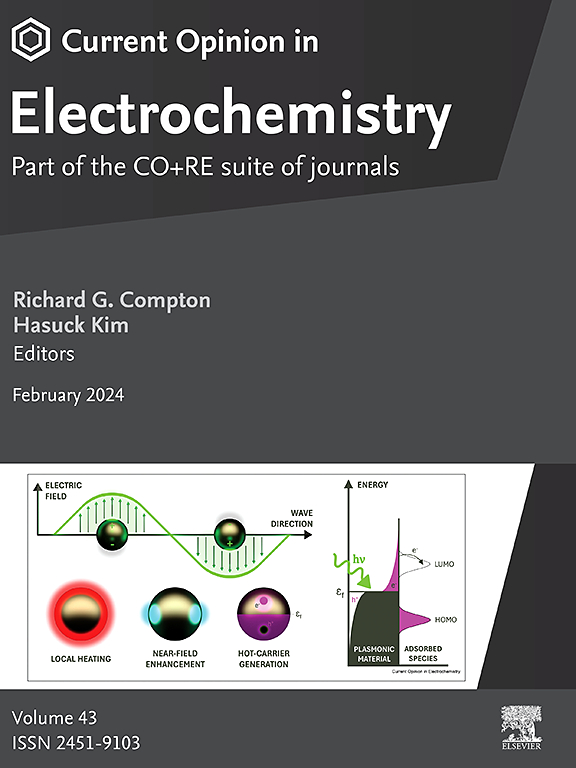Throwing light on synthetic molecular photoelectrocatalysis (part I): Coupling both techniques and results interpretation
IF 6.9
2区 化学
Q1 CHEMISTRY, PHYSICAL
引用次数: 0
Abstract
The conjunction of organic electrosynthesis (OES) and photoredox catalysis (PRC), coined as molecular photoelectrocatalysis (M-PEC), allows the generation of highly reducing/oxidizing species. Albeit short-lived, these species activate molecules to construct synthetically valuable intermediates with an energy requirement that would normally be out of the reach of PRC or OES alone. Nevertheless, it is not easy to do so efficiently, as PRC and OES have their own experimental challenges, and coupling both techniques adds even more complexity. Several authors have enthusiastically accepted the challenge of maneuvering through that complexity in the laboratory. This first part discusses the experiments used in fundamental studies on M-PEC, focusing on how valuable information is obtained through analytical techniques, and its use to favor the M-PEC reaction performance. This data lead to a better understanding of these reactions and increase the probability of success in synthetic applications.
揭示合成分子光电催化(第一部分):耦合技术和结果解释
有机电合成(OES)和光氧化还原催化(PRC)的结合,被称为分子光电催化(M-PEC),允许产生高还原性/氧化性物质。尽管寿命很短,但这些物种激活分子来构建具有合成价值的中间体,其能量需求通常超出PRC或OES的范围。然而,有效地做到这一点并不容易,因为PRC和OES有它们自己的实验挑战,并且两种技术的耦合增加了更多的复杂性。几位作者热情地接受了在实验室中处理这种复杂性的挑战。第一部分讨论了M-PEC基础研究中使用的实验,重点是如何通过分析技术获得有价值的信息,以及它对M-PEC反应性能的影响。这些数据有助于更好地理解这些反应,并增加了合成应用成功的可能性。
本文章由计算机程序翻译,如有差异,请以英文原文为准。
求助全文
约1分钟内获得全文
求助全文
来源期刊

Current Opinion in Electrochemistry
Chemistry-Analytical Chemistry
CiteScore
14.00
自引率
5.90%
发文量
272
审稿时长
73 days
期刊介绍:
The development of the Current Opinion journals stemmed from the acknowledgment of the growing challenge for specialists to stay abreast of the expanding volume of information within their field. In Current Opinion in Electrochemistry, they help the reader by providing in a systematic manner:
1.The views of experts on current advances in electrochemistry in a clear and readable form.
2.Evaluations of the most interesting papers, annotated by experts, from the great wealth of original publications.
In the realm of electrochemistry, the subject is divided into 12 themed sections, with each section undergoing an annual review cycle:
• Bioelectrochemistry • Electrocatalysis • Electrochemical Materials and Engineering • Energy Storage: Batteries and Supercapacitors • Energy Transformation • Environmental Electrochemistry • Fundamental & Theoretical Electrochemistry • Innovative Methods in Electrochemistry • Organic & Molecular Electrochemistry • Physical & Nano-Electrochemistry • Sensors & Bio-sensors •
 求助内容:
求助内容: 应助结果提醒方式:
应助结果提醒方式:


